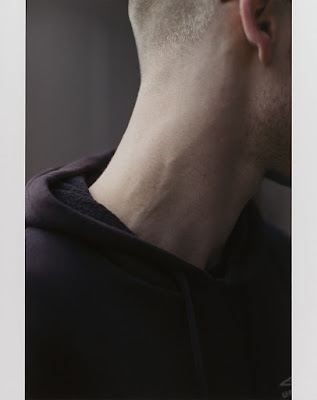 |
| Anonymous Photographer Lillie Langtry 1899 albumen print National Portrait Gallery, London |
 |
| Jacques de Lalaing Model with Mannequin ca. 1884 photographic print from glass negative Rijksmuseum, Amsterdam |
 |
| Kenn Duncan Theatrical Still, Billy Rose Theatre, New York 1975 35mm photographic print New York Public Library |
 |
| Clarence H. White Study of a Young Woman 1907 platinum print Metropolitan Museum of Art, New York |
 |
| Max Dupain Sunbaker 1937 gelatin silver print National Gallery of Victoria, Melbourne |
 |
| Olive Cotton Max after Surfing 1939 gelatin silver print National Gallery of Victoria, Melbourne |
 |
| Alexander Bassano Alice Florence, Lady Garvagh 1897 albumen print National Portrait Gallery, London |
 |
| Anonymous Photographer Stanford Varsity Crew, Hudson River ca. 1910 photographic print from glass negative Bain Collection, Library of Congress |
 |
| Saul Leiter Rain ca. 1953 silver dye-bleach print Art Institute of Chicago |
 |
| Félix Nadar Gabrielle Réjane ca. 1880 salted paper print Victoria & Albert Museum, London |
 |
| Anonymous Photographer Ballet Rehearsal 2009 35mm photographic print private collection |
 |
| Wolfgang Tillmans Collum 2011 inkjet print Art Institute of Chicago |
 |
| Dirk Bakker Downtown Crossing, State Street 1980 C-print Art Institute of Chicago |
 |
| Bruce Davidson Slumber Party 1959 gelatin silver print Art Institute of Chicago |
 |
| Nan Goldin Guido Floating, Levanzo, Sicily 1999 C-print Museum of Modern Art, New York |
Éros et le théâtre – Eros and the theater
The theater (the particularized scene) is the very site of what used to be called venusty, charm, comeliness of form, i.e., of Eros observed, illuminated (by Psyche and her lamp). Enough that a secondary, episodic character offer some reason to be desired (this reason can be perverse, not attached to beauty but to a detail of the body, to the texture of the voice, to a way of breathing, even to some clumsiness), for a whole performance to be saved. The erotic function of the theater is not accessory, for the theater alone of all the figurative arts (cinema, painting) presents the bodies and not their representation. The body in the theater is at once contingent and essential: essential, you cannot possess it (it is magnified by the prestige of nostalgic desire); contingent, you might, for you would merely need to be momentarily crazy (which is within your power) in order to jump onto the stage and touch what you desire. The cinema, on the contrary, excludes by a fatality of Nature all transition to the act: here the image is the irremediable absence of the represented body.
(The cinema would be like those bodies, which pass by, in summer, with shirts unbuttoned to the waist: Look but don't touch, say these bodies and the cinema, both of them, literally, factitious.)
– Roland Barthes by Roland Barthes, translated by Richard Howard (Hill & Wang, 1977)